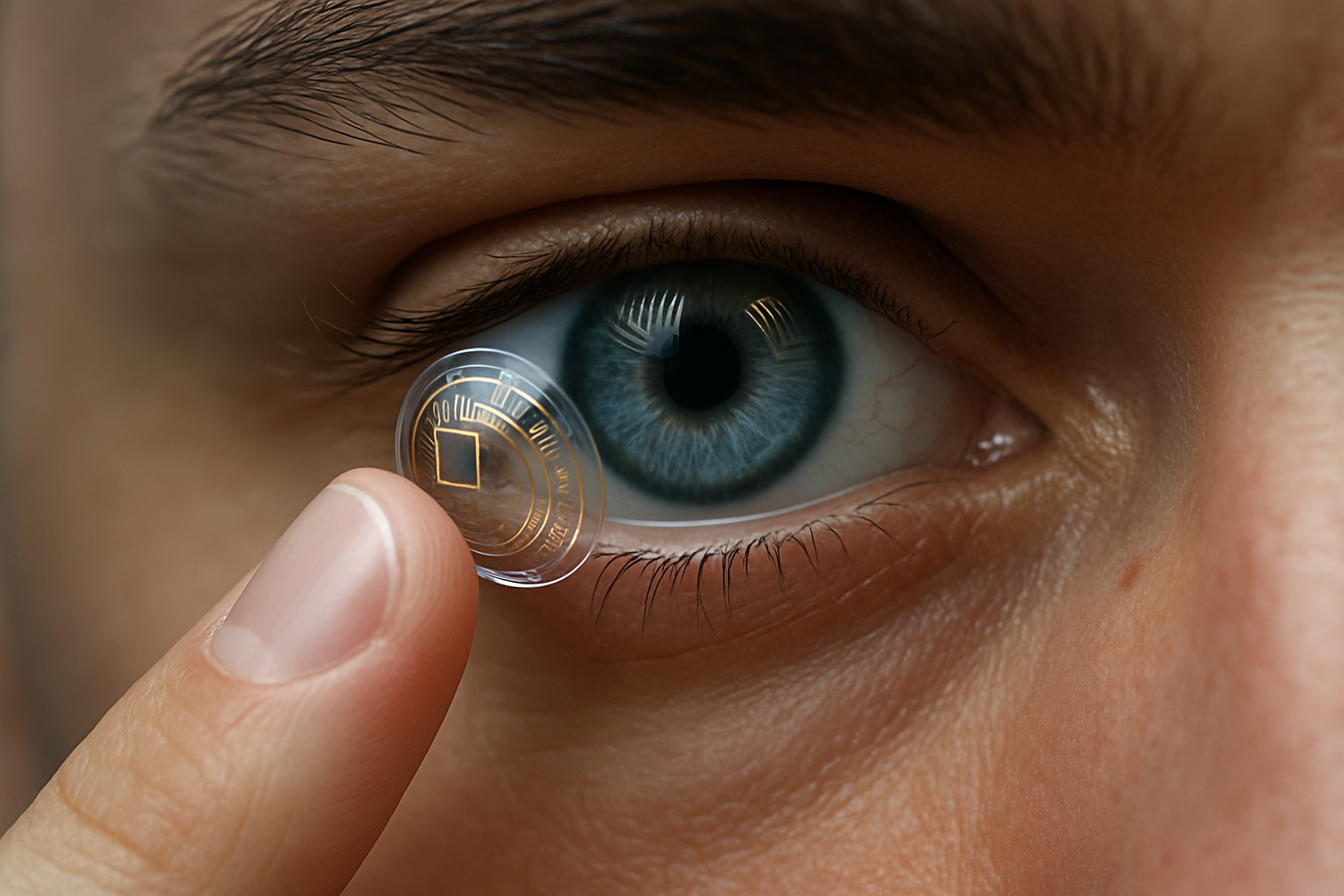Bionic Contact Lenses: The Next Frontier in Wearable Tech
In a world where wearable technology continues to push boundaries, a groundbreaking innovation is on the horizon: bionic contact lenses. These futuristic devices promise to blend the digital and physical worlds like never before, offering users a seamless augmented reality experience right before their eyes. As tech giants and startups alike race to perfect this technology, we delve into the potential applications, challenges, and implications of this revolutionary advancement in visual computing.

The Genesis of Bionic Contact Lenses
The concept of bionic contact lenses isn’t entirely new. Research in this field dates back to the early 2000s, with scientists exploring ways to integrate electronic components into contact lenses. Early prototypes focused on simple applications like glucose monitoring for diabetics. However, recent advancements in miniaturization, flexible electronics, and power management have propelled the technology into new realms of possibility.
Key Components and Technological Challenges
At the heart of bionic contact lenses are microscopic displays, tiny processors, and wireless communication modules. These components must be carefully engineered to fit within the confines of a contact lens while remaining safe for the human eye. One of the biggest challenges is power supply – traditional batteries are too large and potentially harmful. Researchers are exploring innovative solutions like wireless power transfer and energy harvesting from eye movements.
Potential Applications: Beyond Vision Correction
While improving vision is an obvious application, bionic contact lenses offer a plethora of exciting possibilities. Real-time translation of foreign languages, facial recognition for social situations, and navigation assistance are just a few potential uses. In professional settings, these lenses could provide hands-free access to critical information for surgeons, pilots, or engineers. The entertainment industry also stands to benefit, with immersive gaming experiences and enhanced movie-watching on the horizon.
Health and Safety Considerations
As with any technology that interfaces directly with the human body, safety is paramount. Researchers are rigorously testing materials for biocompatibility and long-term effects on eye health. There are also concerns about the psychological impact of constant access to digital information and the potential for eye strain or other vision-related issues. Regulatory bodies will play a crucial role in ensuring these devices meet strict safety standards before reaching consumers.
The Road to Market: Current Progress and Future Outlook
Several companies are making significant strides in bionic contact lens development. While fully-functional prototypes are still in the works, we’re seeing promising advancements. Some firms have successfully integrated simple displays into contact lenses, while others are focusing on specific applications like glaucoma monitoring. Industry experts predict that we could see the first commercial bionic contact lenses hit the market within the next 5-10 years, with basic functionality available sooner.
Price Points and Market Impact
As with most cutting-edge technologies, bionic contact lenses are expected to come with a hefty price tag initially. Early adopters might see prices in the thousands of dollars for a pair. However, as manufacturing processes improve and adoption increases, costs are likely to decrease significantly. The potential market impact is enormous, with analysts projecting a multi-billion dollar industry within a decade of launch. This technology could disrupt not just the wearable tech market, but also impact industries ranging from healthcare to entertainment and beyond.
Ethical and Privacy Concerns
The advent of bionic contact lenses raises important ethical questions. The ability to record and share what we see in real-time could have profound implications for privacy and consent. There are also concerns about data security and the potential for hacking or unauthorized access to the wearer’s visual feed. As this technology develops, it will be crucial to establish clear guidelines and regulations to protect individuals and society at large.
In conclusion, bionic contact lenses represent a fascinating convergence of biology and technology, offering a glimpse into a future where the line between the digital and physical worlds becomes increasingly blurred. While significant challenges remain, the potential benefits are immense. As researchers continue to push the boundaries of what’s possible, we stand on the brink of a new era in wearable technology – one that could quite literally change how we see the world.





